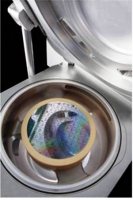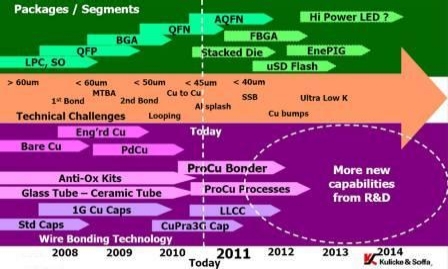March 9, 2011 – Business Wire — Hynix Semiconductor Inc. (Hynix), DRAM and flash memory supplier, has become a member of SEMATECH’s 3D Interconnect program at the College of Nanoscale Science and Engineering (CNSE) of the University at Albany.
Hynix will collaborate with engineers in SEMATECH’s 3D Interconnect program at CNSE’s Albany NanoTech Complex to address industry infrastructure and technology gaps in materials, equipment, integration and product-related issues for high-volume adoption of through silicon vias (TSV). Through technology leadership and global collaboration, SEMATECH’s 3D Interconnect program emphasis is on exploring 3D technology options that provide cost-effective and reliable solutions to drive manufacturing readiness of 3D TSV.
Volume implementation of wide input/output (I/O) memory-based products is gaining significant momentum in the microelectronics industry. Worldwide academic and industrial research activities are currently focusing on stacked wide I/O DRAM for mobile applications. Successful deployment of wide I/O and TSV combination will enable heterogeneous 3D integration and volume production of 3D-based packages. Hynix and SEMATECH will address commercialization challenges and wide I/O interface structures using TSVs for high-volume manufacturing within the next two years.
"3D integration offers a path for higher performance, higher density, higher functionality, smaller form factor, and potential cost reduction," said Dr. Sung Joo Hong, head of the R&D division of Hynix Semiconductor, adding that the goal in SEMATECH’s 3D Interconnect program is realizing 3D’s manufacturability and affordability potential. To acheive high-volume manufacturing (HVM) by 2013, industry-wide cooperation is neccessary, said Raj Jammy, vice president of emerging technologies at SEMATECH.
Hynix Semiconductor Inc. (HSI) is a top-tier memory semiconductor supplier offering Dynamic Random Access Memory chips (DRAMs), Flash memory chips (NAND Flash) and CMOS Image Sensors (CIS). The company’s shares are traded on the Korea Exchange, and the Global Depository shares are listed on the Luxembourg Stock Exchange. Further information about Hynix is available at www.hynix.com
SEMATECH is an international consortium of leading semiconductor manufacturers. Learn more at www.sematech.org
The UAlbany CNSE is dedicated to education, research, development, and deployment in the emerging disciplines of nanoscience, nanoengineering, nanobioscience, and nanoeconomics. With over $7 billion in high-tech investments, the 800,000-square-foot UAlbany NanoCollege houses a fully integrated, 300mm wafer pilot prototyping and demonstration line within 80,000 square feet of Class 1 capable cleanrooms. More than 2,500 scientists, researchers, engineers, students, and faculty work on site at CNSE’s Albany NanoTech, from companies including IBM, GlobalFoundries, SEMATECH, Toshiba, Samsung, Applied Materials, Tokyo Electron, ASML, Novellus Systems, Vistec Lithography and Atotech.
An expansion currently in the planning stages is projected to increase the size of CNSE’s Albany NanoTech Complex to over 1,250,000 square feet of next-generation infrastructure housing over 105,000 square feet of Class 1 capable cleanrooms and more than 3,750 scientists, researchers and engineers from CNSE and global corporations. For more information, visit www.cnse.albany.edu
Subscribe to Solid State Technology/Advanced Packaging.
Follow Advanced Packaging on Twitter.com by clicking www.twitter.com/advpackaging. Or join our Facebook group


 The Conforma system combines high-dose, low-energy doping technology with in-situ
The Conforma system combines high-dose, low-energy doping technology with in-situ 